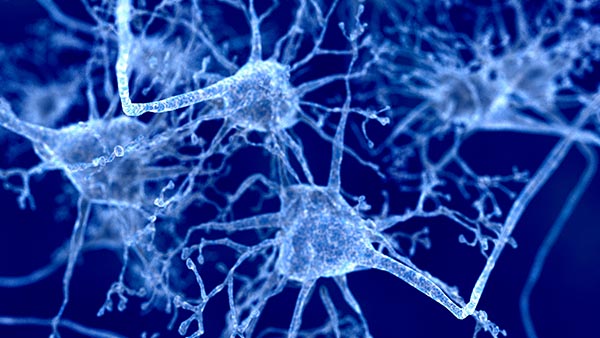Nerves flow throughout our bodies, and we all have them. These nerves are in charge of transmitting messages from the brain to various sections of the body and back. These nerve pathways can get constricted or inflamed at times, causing a variety of problems. Nerve problems are misunderstood, although they can be quite painful. This article will go over some of the most common neuromuscular disorders. According to neurologists in Islamabad and how they’re identified and treated, and what you can do to avoid them!
Carpal Tunnel Syndrome
The median nerve compresses and travels through the carpal tunnel in your wrist, resulting in carpal tunnel syndrome. A network of tendons, muscles, and ligaments called the carpal tunnel allows you to flex your fingers. Carpal tunnel syndrome is more common in those who do repeated wrist motions for long periods of time.
Possible symptoms include:
-
Pain and tingling in your thumb, which may spread into your little finger
-
Fine motor skills such as buttoning or dressing can be challenging if you have a weak grip.
-
Numbness and tingling in the palms of your hands might influence how you grip objects or conduct other duties.
-
It can be difficult to move the wrist in extreme situations.
Carpal tunnel syndrome causes pain and numbness that is often worst at night. This is because some sleeping positions might promote prolonged wrist flexion. Which compresses the nerve even more. Carpal tunnel syndrome can cause discomfort to migrate up the arm and into the shoulder in some circumstances.
Neurologists will do a nerve conduction study and an EMG to measure nerve function to diagnose carpal tunnel syndrome. Wrist splints and corticosteroids are the most common treatments for carpal tunnel syndrome. Carpal tunnel syndrome improves with rest and time. In some cases, you will need surgery to decompress the region surrounding the median nerve.
Peripheral Neuropathy
Peripheral neuropathy is a disorder that affects the peripheral nervous system. Which transmits messages from the brain and spinal cord to the rest of the body. It can affect nerves in the hands, arms, legs, and feet. Peripheral neuropathy can result from a variety of factors, including:
-
Diabetes
-
Alcoholism
-
Chemotherapy drugs
-
Infections such as HIV/AIDS and Lyme disease
-
Toxicity from exposure to heavy metals like lead or mercury
-
Certain autoimmune diseases, such as lupus
Depending on which nerve damage, peripheral neuropathy can cause a wide range of symptoms. Among the signs and symptoms are:
-
Numbness or tingling in your hands or feet that can come and go, or be constant
-
Painful sensations of prickling, stinging, burning, coldness, or intense pressure
-
Muscle weakness
-
Problems with coordination
-
Decreased ability to feel pain or temperature
Due to extreme muscle weakness, it can be difficult to walk or move the afflicted area in severe cases. Some persons with diabetes-related peripheral neuropathy may not experience symptoms for many years. This can lead to leg ulcers and other health concerns.
Neurologists will ask patients about their symptoms. To perform a physical exam to identify peripheral neuropathy. They may also request testing to discover the etiology of the neuropathy. Such as blood tests or nerve conduction investigations. Peripheral neuropathy does not have a one-size-fits-all treatment. Although popular therapies include pain relievers, antidepressants, physical therapy, and, surgery. TENS (transcutaneous electrical nerve stimulation) is a non-invasive therapy option in some circumstances.
Ulnar Neuropathy
Ulnar neuropathy affects the ulnar nerve, which travels down your arm and into your hand along the back of your elbow joint. A variety of factors can cause ulnar Neurotherapy Including:
Pain and tingling in your little finger and along the inside of your hand are classic symptoms of ulnar neuropathy. In some regions, you may also experience numbness and lack of sensation. Ulnar neuropathy can cause trouble with hand movements and grip strength in severe situations.
Neurologists will undertake a physical exam and may request nerve function tests. Such as an EMG or a nerve conduction study to identify ulnar neuropathy. Medications to reduce inflammation and pain, bracing, physical therapy can treat ulnar Neurotherapy. In certain cases, surgery can be useful to treat ulnar neuropathy.
Cervical & Lumbosacral Radiculopathy
Cervical radiculopathy damages the cervical spinal cord, which extends from your brain to your neck. A variety of factors can cause cervical radiculopathy, including:
Cervical radiculopathy can manifest itself in a variety of ways, including:
-
Neck pain
-
Shoulder pain
-
Arm pain
-
Hand weakness
-
Tingling or numbness in your arms and hands
-
Difficulty moving your neck or arms
-
Slurred speech or difficulty swallowing
The lumbar spinal cord, which extends from your lower back to your hips, is affected by lumbosacral radiculopathy. The same causes that induce cervical radiculopathy can cause lumbosacral radiculopathy.
Lumbosacral radiculopathy can manifest itself in a variety of ways, including:
-
Lower back pain that may spread into your buttocks and legs
-
Numbness or weakness in one leg below the knee
-
Difficulty walking on the affected leg(s)
-
Problems with bladder or bowel control
-
Tingling or numbness in your feet and toes
-
In severe cases, lumbosacral radiculopathy can cause paralysis or loss of bladder and bowel control.
Neurologists will undertake a physical exam. May also request tests such as an MRI or CT scan to look for damage to the spinal cord to identify cervical or lumbosacral radiculopathy.
Medications to reduce inflammation and pain, bracing, physical therapy can treat ulnar Neurotherapy. In certain cases, surgery can be useful to treat ulnar neuropathy.
Neuralgias
Neurologists use the word “neuralgia” to characterize persistent nerve pain. Produced by irritation or injury to the nerve. Neuralgias can affect every nerve in the body, but the face and head are the most usually affected. Neuralgias come in a variety of forms, including:
-
Trigeminal neuralgia: the trigeminal nerve is most affected in this type of neuralgia, which causes pain along the side of your face and jaw. Things like brushing teeth, talking, chewing food can trigger Trigeminal neuralgia. Exposure to temperature changes can also cause it.
-
Occipital Neuralgia: Occipital neuralgia is a very common condition. It causes severe headaches for many people. The pain often starts in the back of the head and shoots forward to the front. Patients often complain of pain around or behind the eyes. When pressing around the nerve at the back of the head people get severe pain.
-
Postherpetic Neuralgia: This type of neuralgia occurs as a complication of shingles and may be anywhere on the body. Shingle is a viral infection characterized by painful rash and blisters. Neuralgia can occur wherever the outbreak of shingles was. The pain can be mild or severe and persistent or intermittent.
Neuralgia is a persistent pain condition that can be challenging to manage. Medication, such as pain relievers or antidepressants are common solutions. Physical therapy, and, in some situations, surgery is also common therapies. TENS (transcutaneous electrical nerve stimulation) is a non-invasive therapy option in some circumstances.
Neuralgia is a persistent pain condition that can be challenging to manage. Medication, such as pain relievers or antidepressants are common solutions. Physical therapy, and, in some situations, surgery is also common therapies. TENS (transcutaneous electrical nerve stimulation) is a non-invasive therapy option in some circumstances.





